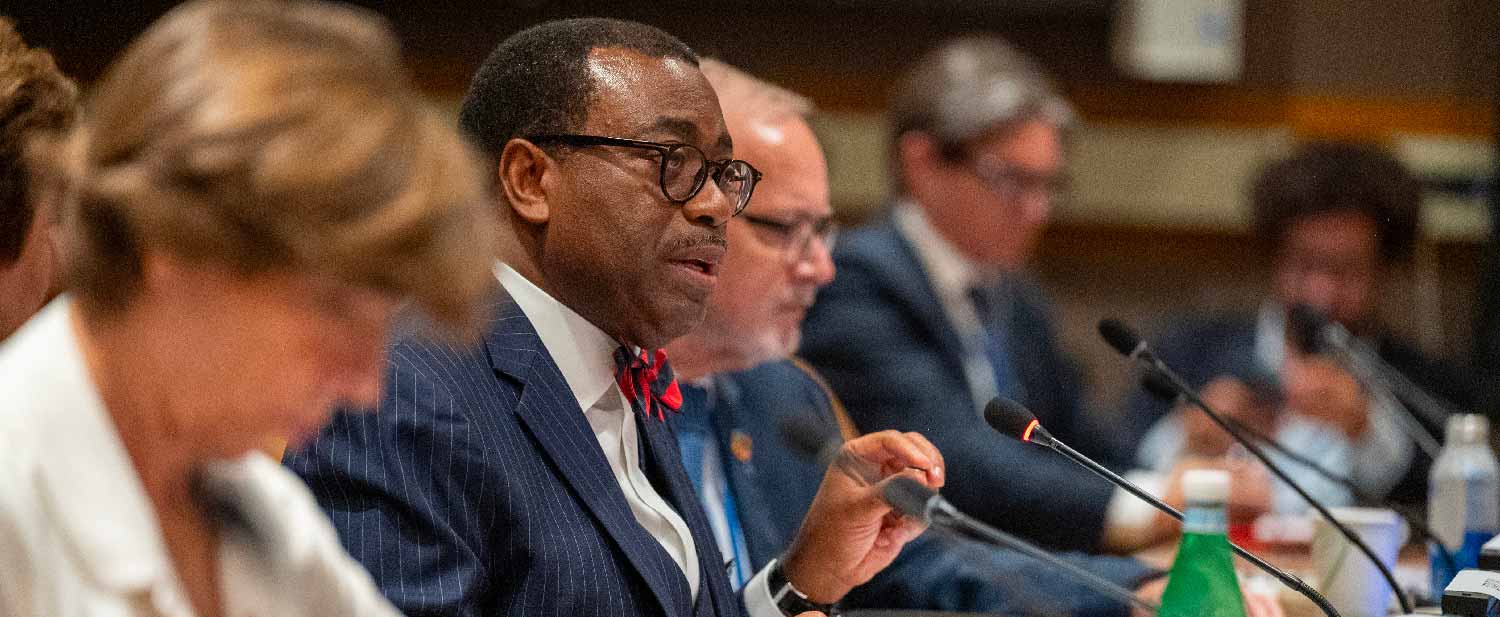
Back in February 2013 in Tunis, in response to a journalist who had asked her how the African Development Bank Group differed from other institutions, Ellen Johnson-Sirleaf, then President of Liberia, replied, “simply the confidence it inspires. I can say without any hesitation that the Bank has played a decisive role in my country in the aftermath of the conflict. It gave us the confidence to believe that we could move on.”
Since its creation in 1964, the African Development Bank has supported the progress of African countries along the path of development. Every year, it supports Africa’s middle-income countries and fragile states in their efforts to better manage their resources and improve the daily lives of their people.
In July 2003, the world’s largest credit rating agencies gave the African Development Bank the highest possible rating of AAA. This historic financial performance has not faltered over the past two decades. In 2015, the launch of the Bank’s High 5s top operational priorities strengthened its work on Africa’s development and improved the lives of millions of Africans. Moreover, in addition to inclusive growth and the transition towards green growth, the Bank focuses its actions on infrastructure development, regional economic integration, the development of the private sector, strengthening governance and accountability, and access to technology.
Prudence, respect for principles, and the pursuit of tangible results are the major new guidelines of Africa’s leading development finance institution, which has supported more than 5000 projects in its 60 years. Today, integration projects remain its trademark. One such project dates to 2012, when the Bank facilitated talks between Zambia, Botswana and Zimbabwe, leading to the construction of the Kazungula Bridge over the Zambezi River. The Bank also opened the way to building the Senegambia Bridge, which opened in 2019. Now, the Bank is financing the ongoing construction of the Rosso Bridge over the River Senegal linking Senegal to Mauritania, as well as the Trans-Saharan Highway currently being completed between Algeria and Nigeria.

Changing the global financial architecture
The African Development Bank Group has helped the countries of the continent follow the development cycle imprinted by the world’s industrialized countries, but at their pace. To achieve results, the Bank puts all its weight in the balance to reform the international financial architecture with a view to securing better access to resources.
This is what lay behind the call by the President of the African Development Bank Group, Akinwumi Adesina, in September 2023 at a high-level round table at the 78th General Assembly of the United Nations. Dr Adesina said that the resources provided by the current financial system were insufficient to enable Africa to achieve its growth and development priorities. He went on to explain that Africa would face a $1.2-billion funding deficit by 2030 for financing its Sustainable Development Goals. What is more, the global financial architecture penalizes those countries most needing resources, for the benefit of the richest nations.
Dr Adesina explained that of the $650 billion in special drawing rights issued by the International Monetary Fund, Africa received just $33 billion, or 4.5% of the total. While the total amount of budgetary measures taken to combat the Covid-19 pandemic reached $17 trillion, Africa received just $89 billion, or 0.5% of the global amount.
But what can such a vast continent with such enormous needs achieve with 0.5% and 4.5% of the resources mobilized? Africa is drowning beneath a sea of debt that is complex to restructure, given the current financial architecture: the situation must be changed.
Solutions do exist. President Adesina proposed one: simplify the architecture of global climate finance, deploy risk-mitigation instruments through multilateral development banks, improve their capital, issue hybrid capital to increase the Bank’s lending capacity for climate and social projects to $21 billion, and channel a greater part of International Monetary Fund’s special drawing rights to these banks. These are among the many avenues to promote.
The African Development Bank Group’s 2024 Annual Meetings, to be held in May in Nairobi, Kenya, will certainly be used to explore these proposals. Achieving a balanced redistribution of the resources of the global financial architecture will allow African countries to accelerate their transformations.







